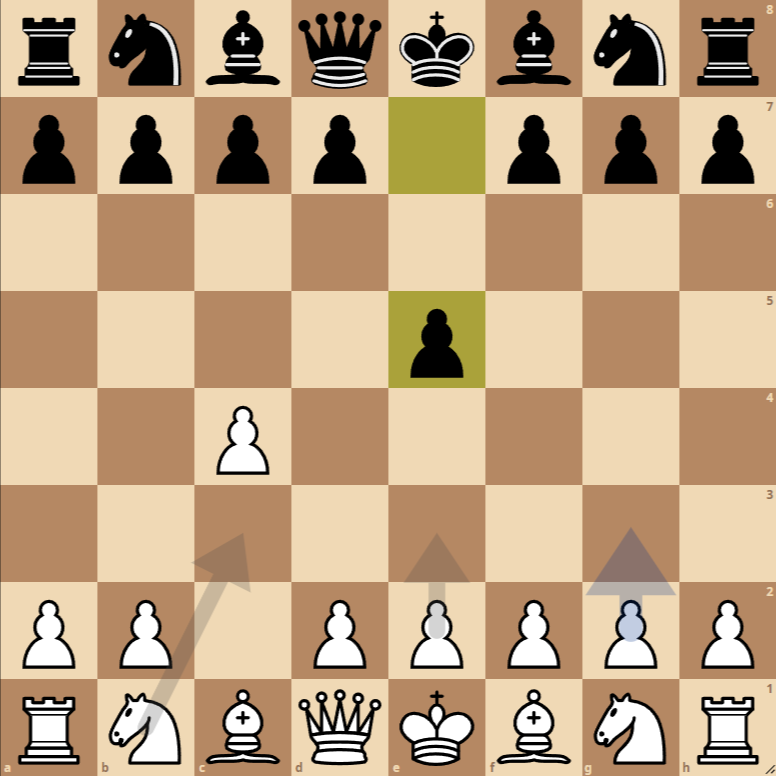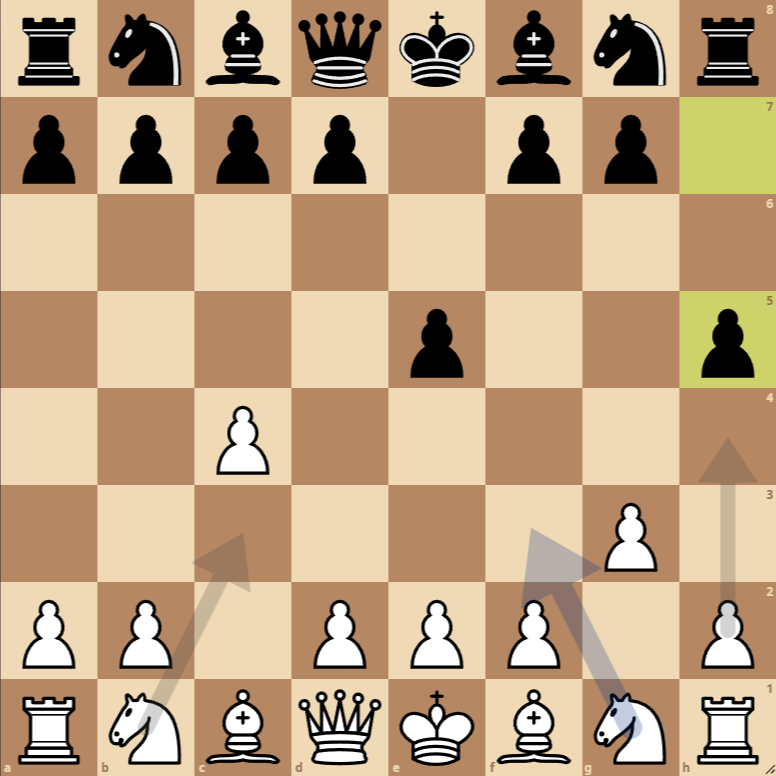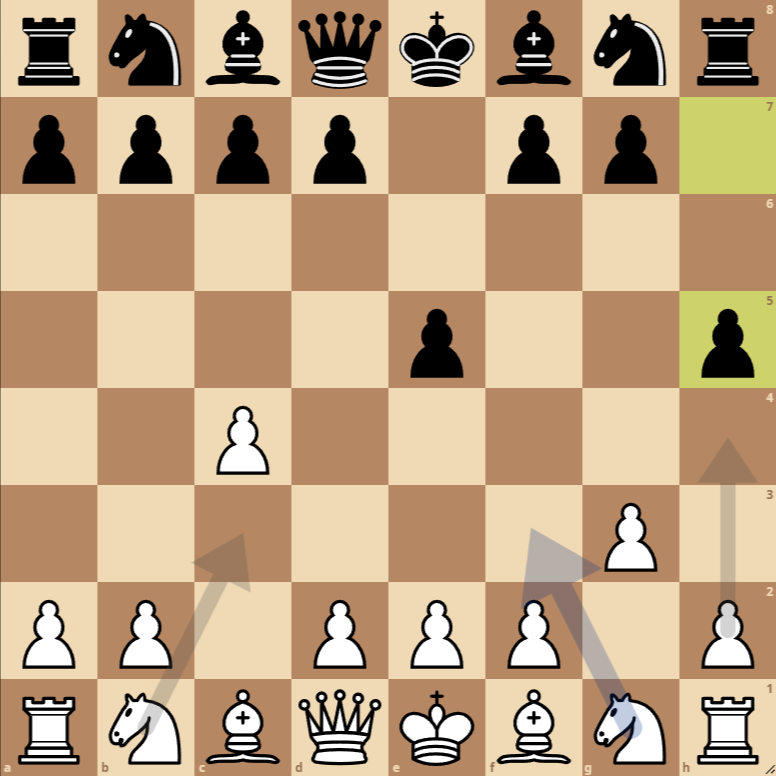How to Play the English Opening: Drill Variation


The English Opening: Drill Variation is a chess opening characterized by unusual and aggressive moves, especially on the king’s side. Let’s break down each of the moves in this opening.
- 1. c4: This is the characteristic initial move of the English Opening. With c4, White aims to control the center from the flank, preparing the way for the eventual development of their pieces.
- 1… e5: Black responds symmetrically, also seeking to control the center and open lines for the development of their pieces, especially the bishop and queen.
- 2. g3: With this move, White prepares for long castling and the development of the bishop on g2, where it can exert significant influence over the center and the king’s side.
- 2… h5: This is an aggressive move by Black, aiming for a quick attack on the king’s side. Although unconventional, h5 prepares the way for a possible pawn advance to h4, destabilizing White’s pawn structure.
Variations of the English Opening: Drill Variation
Variation 1: Early Advance by Black
In this variation, Black advances rapidly on the king’s side with 3… h4, putting pressure on the g3 pawn. This can lead to a highly dynamic and potentially risky game for both sides.
Variation 2: White’s Consolidation
White can choose to play 3. Nf3, developing the knight and strengthening their control in the center. This allows them to respond more flexibly to aggressive moves by Black.

